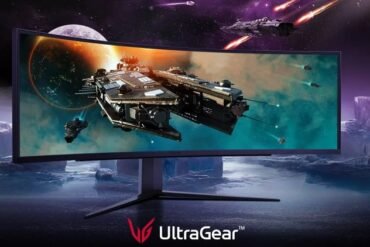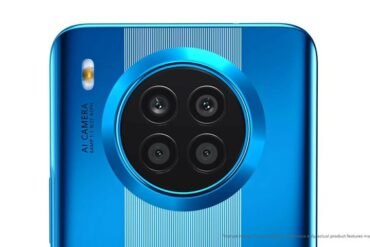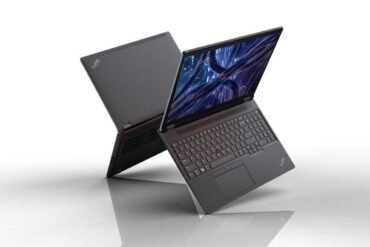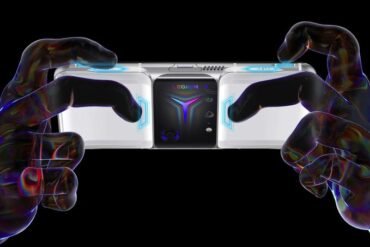Graphics Card PCB Layout: Component Placement
Table of Contents
Introduction: Understanding PCB Layout
When it comes to designing a graphics card, one of the key considerations is the PCB layout. The Printed Circuit Board (PCB) serves as the foundation for all the components and connections on a graphics card, and the way these components are placed can greatly impact the overall performance and functionality of the card.
A well-designed PCB layout is crucial for ensuring proper signal integrity, minimizing noise, and optimizing thermal management. It involves careful consideration of component placement, routing of traces, power distribution, and ensuring proper grounding. This article will delve into the importance of component placement in graphics card PCB layout.
Component placement refers to the strategic arrangement of various electronic components on the PCB. This includes the GPU (Graphics Processing Unit), memory chips, power supply components, capacitors, resistors, and other supporting elements. The goal is to optimize the performance of the graphics card by minimizing signal interference, reducing heat generation, and enabling efficient power delivery.
Proper component placement involves considering factors such as signal paths, heat dissipation, and power requirements. Components that communicate frequently with each other should be placed closer together to minimize trace lengths and reduce signal degradation. Similarly, components that generate a significant amount of heat should be placed in areas with good thermal dissipation, such as near a heatsink or a cooling fan.
Here are some key points to keep in mind when considering component placement for a graphics card PCB layout:
- Group related components together to minimize trace lengths and optimize signal integrity.
- Consider the power requirements of each component and plan for efficient power distribution.
- Ensure proper grounding to minimize noise and interference.
- Place heat-generating components strategically to facilitate effective heat dissipation.
- Consider the overall size and form factor of the graphics card to ensure compatibility with standard connectors and mounting options.
By following these guidelines, PCB designers can create a graphics card layout that maximizes performance, minimizes noise, and enhances overall functionality. Component placement plays a vital role in achieving these goals, and a well-optimized PCB layout can make a significant difference in the performance of a graphics card.
Key Components: Placement Considerations
When designing a graphics card PCB layout, careful consideration must be given to the placement of key components. The positioning of these components can greatly impact the overall performance and functionality of the graphics card. Here are some important factors to consider:
- GPU Placement: The graphics processing unit (GPU) is the heart of any graphics card. It is responsible for performing complex calculations and rendering high-quality graphics. Placing the GPU in an optimal location on the PCB can help ensure efficient heat dissipation and minimize signal interference.
- Memory Modules: Graphics cards typically have dedicated memory modules for storing and accessing data. These memory modules should be placed near the GPU to minimize data transfer distances and reduce latency. Additionally, careful consideration must be given to power delivery to ensure stable and reliable performance.
- Power Delivery: Efficient power delivery is crucial for a graphics card’s performance. Power components, such as voltage regulators and capacitors, should be placed strategically to minimize power loss and voltage ripple. Placing these components close to the power connectors and GPU can help ensure stable power delivery, especially during high-demand scenarios.
- Connectors and Interfaces: Graphics cards feature various connectors and interfaces, such as display ports, HDMI ports, and PCIe slots. These connectors should be positioned in a way that provides easy access and minimizes signal interference. Careful routing of traces and proper shielding can help maintain signal integrity and prevent performance degradation.
- Cooling Solution: Adequate cooling is essential for a graphics card’s longevity and performance. Placement of cooling components, such as heat sinks, fans, and thermal pads, should be carefully considered. Proper airflow and heat dissipation can help prevent overheating and ensure optimal performance in demanding applications.
By considering these key component placement considerations, designers can optimize the performance, reliability, and thermal characteristics of a graphics card PCB layout. Careful planning and attention to detail in component placement can result in a graphics card that delivers exceptional gaming and graphics rendering experiences.
Optimizing Signal Flow: Component Arrangement Techniques
When it comes to designing a graphics card PCB layout, the arrangement of components plays a crucial role in ensuring optimal signal flow and performance. By strategically placing components, engineers can minimize signal interference, reduce power consumption, and enhance overall system stability. Here are some key techniques for optimizing signal flow through component arrangement:
- Keep high-speed components close: High-speed components, such as memory modules and GPUs, should be placed as close to each other as possible. This helps to minimize signal propagation delays and reduces the chances of signal degradation due to long trace lengths.
- Separate noisy and sensitive components: Components that generate high levels of electromagnetic interference (EMI), such as power regulators and clock generators, should be isolated from sensitive components like analog audio or sensor circuits. This prevents EMI from negatively impacting the performance of these sensitive components.
- Use decoupling capacitors: Placing decoupling capacitors near power-hungry components can help stabilize the power supply and minimize voltage fluctuations. These capacitors act as energy reservoirs, providing instantaneous power when needed and reducing the chances of signal distortions or noise.
- Minimize trace lengths: Long traces can introduce signal delays and increase the chances of signal degradation. By minimizing trace lengths, especially for high-speed signals, engineers can maintain signal integrity and reduce the risk of cross-talk or electromagnetic interference.
- Group components based on functionality: Grouping components based on their functionality can simplify the routing of traces and reduce the complexity of the PCB layout. For example, placing all memory-related components together and separating them from other circuitry can help optimize the signal flow and improve overall system performance.
By implementing these component arrangement techniques, engineers can optimize the signal flow in a graphics card PCB layout, resulting in improved performance, reduced power consumption, and enhanced system stability. It is important to carefully consider the placement of each component to ensure efficient signal transmission and minimize potential signal interference.
Thermal Management: Heat Dissipation Strategies
Heat dissipation is a critical aspect of graphics card PCB layout and component placement. Graphics cards generate a significant amount of heat during operation, which, if not properly managed, can lead to performance issues, component failures, and even system crashes. To ensure optimal thermal performance, various strategies are employed to dissipate the heat efficiently. Here are some commonly used heat dissipation strategies:
- Heatsinks: Heatsinks are commonly attached to the key components, such as the GPU and memory chips, to absorb and dissipate heat. These metal structures increase the surface area available for heat transfer and are often coupled with thermal pads or thermal paste to enhance heat transfer.
- Fans: Fans play a crucial role in cooling the graphics card. They are strategically placed to create airflow and direct it over the heatsinks. By constantly moving air, fans help dissipate heat effectively, preventing overheating and maintaining optimal operating temperatures.
- Heat Pipes: Heat pipes are heat transfer devices that use a combination of gas and liquid to transport heat from one location to another. They are commonly used in high-performance graphics cards to transfer heat from the GPU to the heatsink, improving overall thermal efficiency.
- PCB Design: The layout of the graphics card’s PCB itself can impact heat dissipation. Proper component placement, ensuring that heat-generating components are adequately spaced, can help prevent heat buildup. Additionally, the use of multiple layers in the PCB can help improve thermal management by providing additional pathways for heat dissipation.
By implementing these heat dissipation strategies, graphics card manufacturers can ensure that their products operate within safe temperature limits, thereby improving performance and longevity. It is crucial for designers to carefully consider thermal management during the PCB layout and component placement process to deliver efficient and reliable graphics cards.
PCB Layout Best Practices: Ensuring Performance and Reliability
When it comes to designing a graphics card PCB layout, component placement plays a crucial role in determining the performance and reliability of the card. Here are some best practices to follow to ensure optimal performance and reliability:
- Optimize Signal Integrity: Proper component placement is essential for maintaining signal integrity. Keep critical components such as memory chips, power regulators, and connectors close to the GPU to minimize signal losses and noise.
- Thermal Management: Heat dissipation is a significant concern for graphics cards. Place heat-generating components such as the GPU and memory chips strategically to ensure efficient cooling. Consider adding thermal vias and heat sinks to dissipate heat effectively.
- Power Distribution: Ensure that power distribution traces are wide enough to handle the required current. Place decoupling capacitors near power pins to minimize voltage fluctuations and noise. Separate digital and analog power planes to reduce interference.
- Signal Traces and Routing: Keep signal traces as short and direct as possible to minimize signal degradation. Avoid crossing high-speed signals to prevent crosstalk. Use proper ground planes and power planes for impedance control and noise reduction.
- Component Placement: Place components in a logical and organized manner to facilitate ease of assembly, debugging, and maintenance. Group related components together and consider the height and size of components to avoid interference and mechanical conflicts.
- EMI/EMC Considerations: Design the PCB layout with electromagnetic interference (EMI) and electromagnetic compatibility (EMC) in mind. Follow industry guidelines and standards to reduce emissions and susceptibility to interference.
- Design for Manufacturing and Testing: Collaborate with the manufacturing team to optimize the PCB layout for efficient production. Consider the placement of test points and accessibility for automated testing equipment.
By following these PCB layout best practices, you can ensure that your graphics card design delivers the desired performance and reliability while minimizing signal integrity issues, thermal concerns, and manufacturing challenges.


























